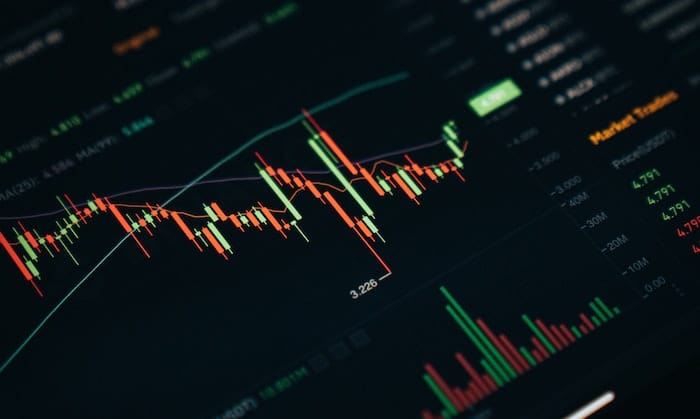Oxford University student and future Magic Circle trainee Declan Peters examines the collapse of Silicon Valley Bank

On Friday 10 March 2023, Silicon Valley Bank (SVB) was shut down by regulators. The bank’s failure has sent shockwaves through the markets — some even began to fear a repeat of the 2008 financial crisis. While the impact has not been (and is very unlikely to become) that severe, the focus has shifted in recent days to understanding why the bank failed, and how we can avoid another event anytime soon — since SVB’s collapse has rocked not only its own stakeholders, but also related companies (and even entire industries) across the globe.
Wall Street Journal columnist Andy Kessler released an opinion piece in the immediate aftermath of the dramatic collapse which directed significant blame at the diversity work of the firm(£). A particularly dark passage claims that “in its proxy statement, SVB notes that besides 91% of their board being independent and 45% women, they also have ‘1 Black,’ ‘1 LGBTQ+,’ and ‘2 Veterans.’ I’m not saying 12 white men would have avoided this mess, but the company may have been distracted by diversity demands,” Kessler writes. Similar sentiments have been reiterated (mostly by Republican politicians) across the US over the last few days. SVB has been labelled a “woke” bank catering to Big Tech-based Democrats, with Florida Republican Governor Ron DeSantis suggesting that “they’re so concerned with DEI and politics and all kinds of stuff […] that really diverted from them focusing on their core mission”.
While the bank’s admirable diversity efforts continue to be weaponised for political gain, this article instead alleges another much more plausible cause of the turmoil — financial mismanagement which could have been made possible by a lack of suitable regulation. In order to demonstrate this, it is important to first outline a brief timeline of the bank’s collapse.
Founded in 1983, SVB was a major player in the financing of tech companies and start-ups in America’s innovation hub. It eventually became rather sizeable, growing to earn the spot of 16th largest bank in America — big enough to leave a major scar once it went under, but, crucially, not quite big enough to fall under particular legal frameworks of financial regulation that may have avoided this crisis altogether — more on that soon.
The collapse, in short, can be traced back to SVB’s large investment of customer deposits into US government bonds over the course of 2021-22. While not generally viewed as high-risk investments, bonds do hold an inverse relationship with interest rates — so when the Federal Reserve began to raise interest rates rapidly in 2023, SVB’s portfolio value was suddenly plummeting. Another consequence of interest rate hikes was a tougher economic climate for SVB’s clients, who consequently missed out on expected venture capital investment, and so turned to their bank to withdraw money. Caught in the worst possible ‘perfect storm’, SVB appeared to panic and sold off its bonds at a $1.8 billion loss. This panic then transferred over to clients receiving the news of SVB’s major losses, and a run on the bank ensued. SVB stock plummeted, and the Federal Deposit Insurance Corporation (FDIC) stepped in shortly thereafter. While the FDIC has promised to return all customer funds, and most economists feel there is not a major threat to overarching financial structures as a result of SVB’s collapse, there have still been serious implications for other businesses (including structurally important banks themselves — Santander stock dropped 7%). All major US indexes fell at least 1% in the immediate aftermath, to provide another example. As a result, the need to diagnose a cause (and therefore avoid a repeat event) is obvious.
Want to write for the Legal Cheek Journal?
Find out moreFollowing the 2008 financial crisis (a repeat of which was the primary concern following the SVB collapse), the 2010 Dodd-Frank Act was passed by US Congress. The overall goal was to make the overarching financial system safer in the future. While the Act itself is over 800 pages long, the short version is that it tightened regulations on banks in an effort to ensure lax governance would not allow high-risk investments and lending practices (the ones that largely caused the crash in 2008) to occur again. High-risk investments such as, for instance, investing a huge proportion of your clients’ deposits into severely interest rate dependent products at a time where hikes certainly seemed possible (if not likely).
The Dodd-Frank Act included a provision stating that banks with over $50 billion in assets (2023 SVB ticked that box) would be subject to particularly stringent risk assessment standards since, if any one of those banks were to collapse, the aftermath would pose a threat to the entire financial system.
Here is the major issue, however — when Trump came to power, he announced a Republican agenda of massive deregulation. One of the first parts of this agenda was to re-examine the Dodd-Frank Act and suggest that the threshold be moved from $50 billion to $250 billion. Where SVB did fall under the regulations before, it would not anymore — meaning much greater freedom to make high-risk investments. The Act passed as a result of Trump’s efforts (and a successful lobbying campaign admittedly reaching across the political spectrum, but still drawing from mostly Republican support) was titled the Economic Growth, Regulatory Relief and Consumer Protection Act. The final product is actually a little more complicated than simply moving the threshold from $50 billion to $250 billion — it allows the Federal Reserve to exercise some discretion in what it chooses to regulate across the range of assets under management in which SVB sat. In practice, little of that discretion was exercised — while small adjustments were admittedly made (e.g. new Prudential Standards, changes to Liquidity Requirements, etc.), medium-sized banks like SVB were left largely to their own devices.
It would be an overstatement to state that, if Dodd-Frank had simply been left alone, it would definitely have prevented the SVB collapse altogether. However, Randy Quarles (a senior staff member at the Federal Reserve) stating in a recent interview that deregulation “had nothing to do” with the collapse certainly raises some eyebrows. Former FDIC lawyer Todd Phillips points out that, if Dodd-Frank had not been amended, SVB would have had to fulfil stringent liquidity requirements which may well have prevented the crisis. Additionally, a lack of regulation meant that, at the point of its collapse, SVB appeared to be in such a messy state that it became even harder to find a buyer willing to step in. HSBC did recently purchase the UK arm of SVB (£) (in a deal widely promoted by Prime Minister Rishi Sunak as a successful move to protect UK customers), but the impact has not been mitigated elsewhere yet.
In my opinion, SVB only has itself to blame for poor investment choices and suboptimal liquidity (a lack of risk management has been widely acknowledged now, including the fact that the firm went a staggering eight months without a chief risk officer). However, lawmakers (via regulation) have the ability (or perhaps even the responsibility) to mitigate at least some of these risks in the first place. Turning instead to a supposed over-emphasis on diversity is not only an exploitation of a serious financial disaster for political gain, but also embodies a dangerous deflection of accountability by lawmakers who should have done better. Ironically, it was many of the very same politicians who voted for the 2018 deregulation act who now find themselves scrambling to blame diversity for failings they could better identify in a mirror.
Declan Peters is an Oxford University final-year music student and aspiring lawyer. He holds a training contract offer at Allen & Overy (having also completed a vacation scheme at Hogan Lovells) and maintains a particular interest in intellectual property/entertainment law. He is also a passionate advocate for social mobility in the legal industry.
 (
( (
(

